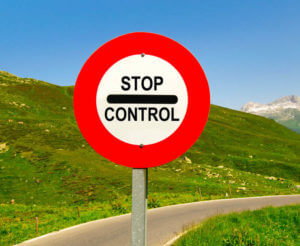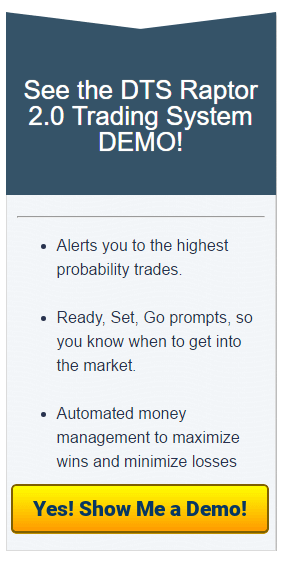Day Trading Tips and Tricks
Risk Management 101: Using a Stop Loss
 Stop Loss positions are critical for understanding the value of good risk management. Remember that in many ways our trade is only as good as the stop we use as it affects risk/reward ratio, win percentage and how long we are in the market during volatility and a move against us. Below are some various approaches to where to put the stop a the initial entry of the trade. Keep in mind that this is not a comprehensive list as there are so many different ways to accomplish the task. That being said, if you are a new trader to forex, I hope that the following approaches give you a reference point to get started.
Stop Loss positions are critical for understanding the value of good risk management. Remember that in many ways our trade is only as good as the stop we use as it affects risk/reward ratio, win percentage and how long we are in the market during volatility and a move against us. Below are some various approaches to where to put the stop a the initial entry of the trade. Keep in mind that this is not a comprehensive list as there are so many different ways to accomplish the task. That being said, if you are a new trader to forex, I hope that the following approaches give you a reference point to get started.
Before we actually take a look at the specific areas, a quick few words about what we do when we find good areas to place your stop behind. First off, make sure that you give market enough breathing room for volatility around the area. What I mean is that even when you find an area in the market you want to use for protection and it’s actually a good or usable area, you should still place the stop more than 10 pips behind it. Because of natural price movement during volatility around said area is likely to push price beyond your desired area, albeit temporarily. So give yourself some breathing room.
Second, look for areas of MULTIPLE reason for the stop loss. Sure, using a single reason like a strong area of s/r is great, but finding that plus and ema and swing high/low only makes it so much more difficult for price to really break the area and confirmation that you have made the right decision in the trade.
Use Support and Resistance: This includes horizontal Support and Resistance, EMAs (“Exponential Moving Averages” which act as dynamic Support and Resistance), and trend lines. These areas are not only my primary area of focus for catching trades but I use them to protect my stop more often than not. What works as an excellent place for entries often serves as the same are to place my stop behind. This gives me the very best chance for a higher Risk/Reward since the area of protection is also the same area as the entry. I vary the amount of pips behind the area depending on the strength and convergence of multiple s/rs from 20-50 pip normally and on pairs like the Eur/Gbp that have a very small daily range, this number will be cut in half.
 Swing For Your Stop: This is also a fantastic method for placing stops, especially as you go down to smaller time frames and scalp. As the market moves in a direction, it goes back and forth. The point it turns around at is known as a “swing” and this can be a “high” or “low”. These swing highs and lows appear on every timeframe, but not all are created equal. Obviously, higher time frames = higher relevance, but come with the fact that they might be hundreds of pips away from your trade. Using this type of stop is best when your entry comes soon after the turn from a swing. That way you still protect a better R/R potential. While major areas of S/R are timeframe independent, swings depend on the view of the market making them dynamic based on the timeframe you use them on. That means that it will take a little more practice to find better quality swings to use as a stop. Overall though, this option gives you a nice place to look for a stop if you are between areas of s/r.
Swing For Your Stop: This is also a fantastic method for placing stops, especially as you go down to smaller time frames and scalp. As the market moves in a direction, it goes back and forth. The point it turns around at is known as a “swing” and this can be a “high” or “low”. These swing highs and lows appear on every timeframe, but not all are created equal. Obviously, higher time frames = higher relevance, but come with the fact that they might be hundreds of pips away from your trade. Using this type of stop is best when your entry comes soon after the turn from a swing. That way you still protect a better R/R potential. While major areas of S/R are timeframe independent, swings depend on the view of the market making them dynamic based on the timeframe you use them on. That means that it will take a little more practice to find better quality swings to use as a stop. Overall though, this option gives you a nice place to look for a stop if you are between areas of s/r.
Mechanical/Mathematical: These types of stops are created as part of the overall trade plan and are arbitrary in the sense that they are calculated independent of any Support and Resistance. Before I go any further, I caution against using this type of stop UNLESS you have a number of trades under your belt with any given system to see what works. I have tested identical entries on a system before, and then used a 15, 30 and 50 pip stop and managed them the same. The results were wildly different between them and depending on pair and the market conditions. I do find value in them for certain styles of trading though where you know what your average win size and win % will end up being with a certain value. For example, if I am scalping with a 10 pip target, that I have tested and confirmed wins 10 pips over 50% of the time with a 10 pip stop, I feel totally comfortable placing that mechanical stop after entry each and every time. There are also many mathematical models to use for stop size, based on volatility, pair’s daily range, etc… One thing to note here is a mechanical stop is an excellent way to test a system since it limits the variables involved. But don’t rush to judgement of the system until you have tried various stops in various markets over a period of time. Overall though, I recommend this stop only if you know the reason for doing it, rather than trying to keep in a small stop arbitrarily.
Well, that should get you going on your quest for quality risk management. Again, this is certainly not an exhaustive list, and the longer you trade, the more interesting variations of where to place a stop at trade entry you will surely find. Remember, that no matter what, you should always have stop loss, and beyond that, one that makes sense for your trade. Keep in mind that various trading styles and systems will require you to make different stop decisions as you go.
Just ALWAYS remember to place your stop, and DON’T MOVE IT BACKWARDS! You are placing the stop to risk that amount, and if the market takes you out, so be it, don’t cost yourself more on the loss by trying to stay in the market longer. Most of the time, there is a reason your well-placed stop has been hit. We cannot predict what the market will do all the time, but one thing we have definite control over is how much we risk to that unpredictable market. Control your risk and you will surely control your trading and success!
Join us in our Trade Room. Click HERE to Register.





